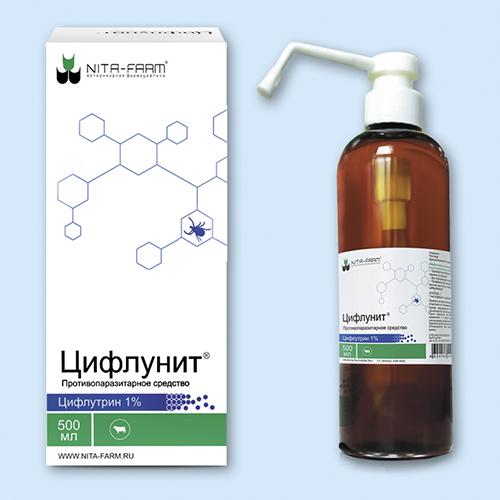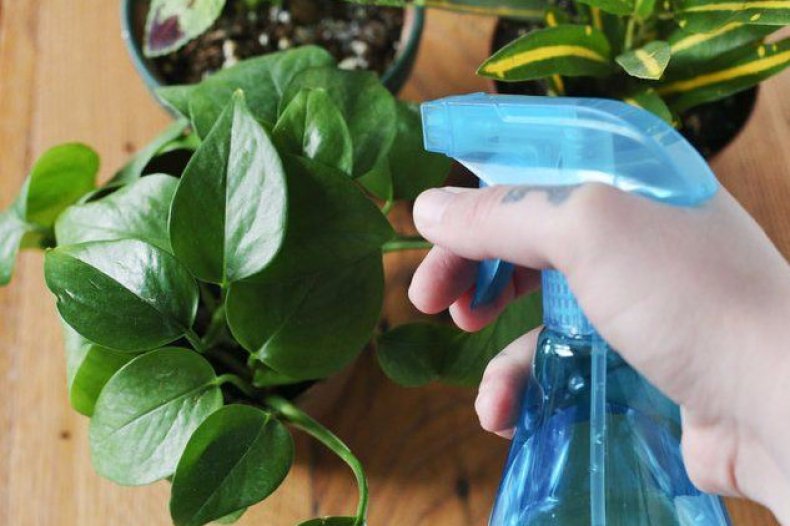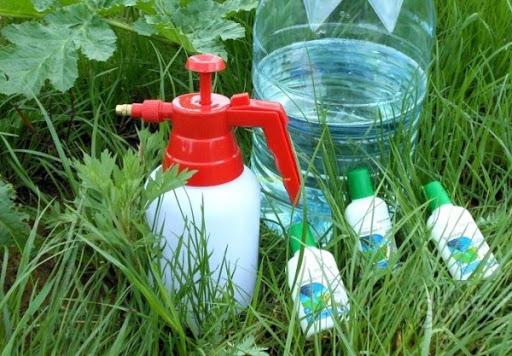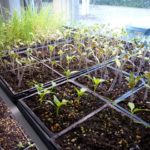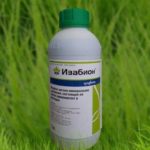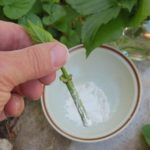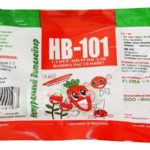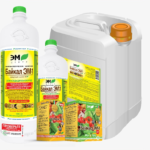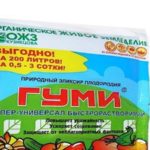The effectiveness of insecticidal preparations directly depends on the active components that make up the chemicals. Some preparations with cyfluthrin are developed to control pests that attack seedlings, others are used for pre-sowing treatment of seed material. Products based on cyfluthrin are also used in veterinary medicine to protect animals from parasites. Before using chemicals, be sure to read the instructions.
Release form and active ingredient of the drug
Cyfluthrin belongs to the chemical class of pyrethroid insecticides and household pesticides. It is not used as an independent substance; cyfluthrin is used in combination with other pesticides to treat seeds before planting in the ground.
The chemical is a white powder that has a subtle odor. Cyfluthrin is also produced in the form of a viscous brown-yellowish liquid with a slight odor - this form is used to kill parasites in farm animals.
To treat seeds before planting in the ground, cyfluthrin is used in insecticidal preparations such as Modesto and Poncho Beta. The chemicals additionally include clothianidin at a concentration of 400 grams per liter. Both drugs are marketed in the form of a suspension concentrate.
How and against what does it work?
The active substance cyfluthrin has a contact and intestinal effect. It affects the nervous system of pests and causes overexcitation of parasites. As a result, a spasm of the muscles of the insects occurs and their subsequent death. The main effect of the chemical is on the peripheral nervous system of pests, which is especially sensitive to the effects of insecticidal drugs.
In combination with clothianidin, cyfluthrin is used to kill a wide range of sugar beet pests, as well as to prevent damage to rapeseed by the cruciferous flea beetle. In the first case, it is recommended to use the chemical agent “Poncho Beta”; in the second case, the drug “Modesto” demonstrates the greatest effectiveness.
Insecticidal preparations based on cyfluthrin have a number of advantages, thanks to which they can effectively cope with the problem of pests of agricultural crops.
The advantages of chemicals include:
- high efficiency in the fight against insect pests;
- speed of action due to the interaction of two active substances;
- long period of protection - from the moment the material is sown in the ground until two pairs of true leaves appear;
- equal effectiveness in destroying both leaf-eating and soil-borne pests;
- lack of phytotoxicity, subject to compliance with application standards and instructions for use;
- possibility of joint use with many protective equipment (preliminary chemical compatibility test is carried out);
- high germination of seed material after treatment with insecticides.
Preparations based on cyfluthrin are intended for treating agricultural seeds in factories; they are not recommended for use in private farms.
Instructions for use of cyfluthrin
The rate of application of the chemical depends on the type of insecticidal preparation and the crop whose seeds must be treated before planting in the ground.
The consumption rates of insecticides are indicated in the table:
| Processed crop | Name of insecticide | Drug consumption | Working fluid quantity |
| Sugar beet seeds | "Poncho Beta" | From 25 to 50 | For a ton of seeds you will need from 30 to 60 liters of working fluid |
| Rapeseed seeds | "Modesto" | From 12.5 to 25 | To process tons of seed material, use no more than 35 liters of working solution |
After using insecticidal preparations to treat the material, the seeds will be quite wet, so they need to be dried. Lay out the material in a thin layer or use special equipment.If you do not do this, they will form clumps and stick together, which will not allow for uniform sowing of seed material.
Side effects
If you do not follow safety precautions when working with a chemical, it will lead to poisoning. Insecticide vapors are especially dangerous; they lead to irritation of the mucous membranes of the respiratory tract.
If an insecticide gets into your eyes, wash them with plenty of running water and visit the hospital, not forgetting to take the label from the chemical with you.
Contraindications for use
Cyfluthrin-based insecticidal chemicals should not be used on crops not specified in the instructions for use. Otherwise, it will damage the seed material.
Special instructions and personal preventive measures
When working with chemicals that contain cyfluthrin, it is necessary to take into account that it is especially dangerous for fish and other inhabitants of water bodies. You should not pour the remaining working fluid into rivers and lakes, so as not to provoke a massive death of fish. Disposal of the chemical is carried out in compliance with safety requirements.
When starting to treat seeds with insecticidal preparations, wear protective clothing to prevent drops of liquid from getting on the skin, which can lead to dermatological problems and allergic reactions. The respiratory tract is protected with a respirator.
After finishing work with the chemical, be sure to take a shower with detergent and wash all work clothes, after which they hang them outside to air.
Are there any analogues?
Cyfluthrin-based drugs can be replaced with chemicals containing other active ingredients. Popular tools include “Goalkeeper”, “Matador” and “Gaucho”.

